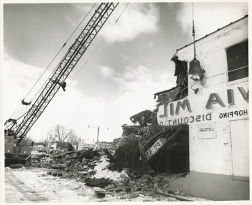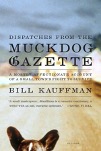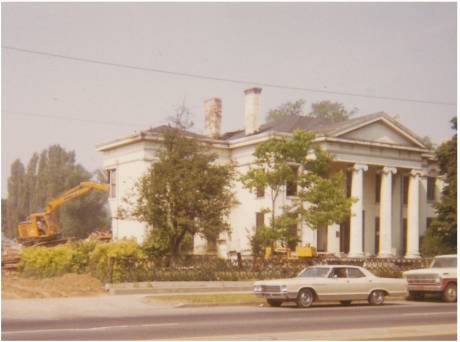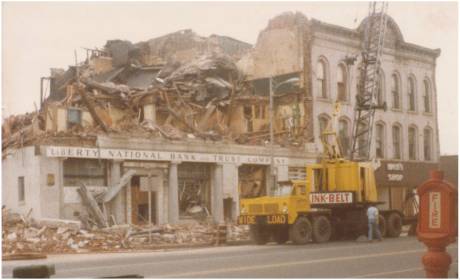I remember how I felt when I left home to go to college. I was nervous and excited at the same time. I knew I was going to miss my hometown. I was a little homesick and looked forward to coming home for a visit.

How could two words cause so much damage to our Main Street? So I went to the Merriam-Webster Dictionary for a definition. It was defined as The process where an urban neighborhood or area is improved and rehabilitated.

The renewal process can include demolishing old or run-down buildings, constructing new, up-to-date housing, or adding features like a theater or stadium.
In looking for a better definition, I came across Bill Kauffman's words on Urban Renewal from his book Dispatches from the Muckdog Gazette. His words I could identify.
In 1991 he wrote, "The city fathers rushed headlong into urban renewal, whereby the federal government paid Batavia to knock down its past: the mansions of the founders, the sandstone churches, the brick shops, all of it Batavia tore out—literally—its five-block heart and filled the cavity with a ghastly mall, a dull gray sprawling oasis in a desert of parking spaces. The mall was a colossal failure, but it succeeded in destroying the last vestiges of our home-run economy. JC Penney and Wendy's were in; the Dipson Theater and the Dagwood Restaurant were out."

Yes, some of the buildings needed repair, and some were the home for rodents, but people lived in those upper apartments; it was their home.
Urban Renewal demolished our history and our memories.

Today, we see the value in preserving our history. Almost simultaneously with the destruction of Urban Renewal, the Landmark Society was created. The mission of the Landmark Society of Genesee County was the preservation, protection, improvement, restoration, or reproduction of places and objects of historic or civic interest and natural or architectural beauty. Catherine Roth was very instrumental with this new group as one of the charter members.

Today local artists and authors preserved postcards, paintings, and drawings. For example, the late Pat Burr took the north and south side of Main Street and painted every store standing in the 1950s. Her artwork is priceless. Don Carmichael, another incredible artist, sketched many of the early buildings of Batavia.
Many or most can agree that Urban Renewal did not make our city better, it did not provide homes to the people living above the businesses downtown, and it certainly did not enhance our downtown. If you want to learn more about Genesee County's History, please visit the Holland Land Office Museum under the directorship of Ryan Duffy on 131 West Main Street. In addition, they have the Joseph Ellicott Book Store with shelves of books on local history.
Our county historian, Dr. Michael Eula, can be found at the Genesee County History Department at County Building 2, 3837 West Main Street Road is another excellent resource on our county history.
Every time I drive down Main Street, I remember what we had and lost due to someone's idea that Urban Renewal would enhance our city.

Anne Marie Starowitz is a writer and teacher living in Batavia.
